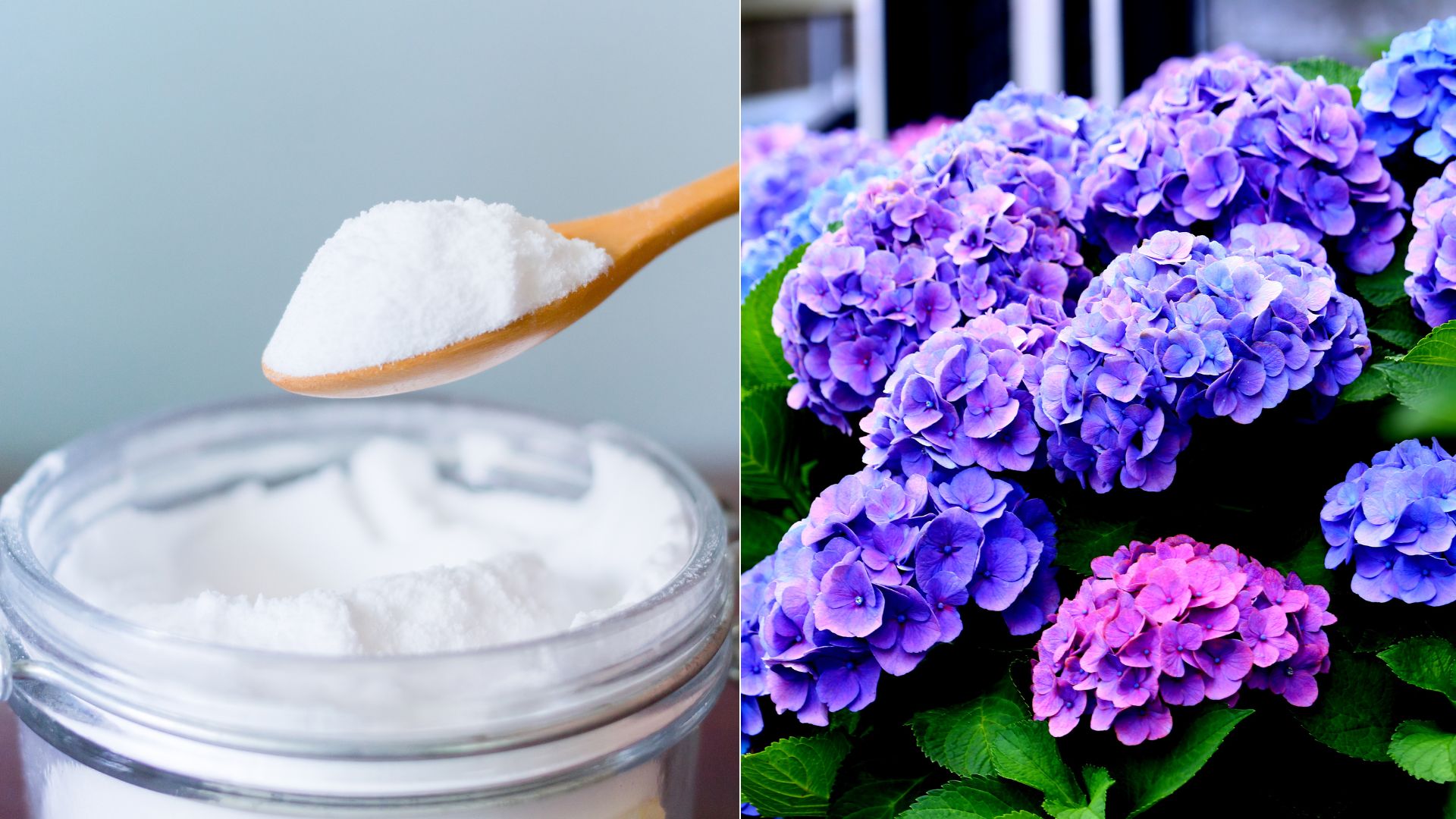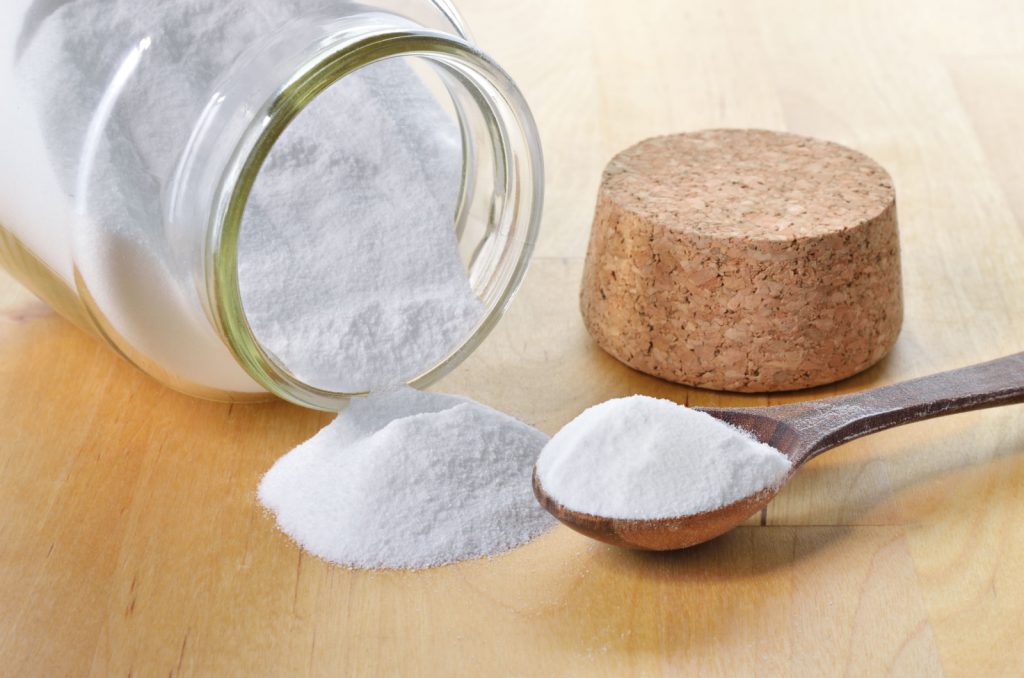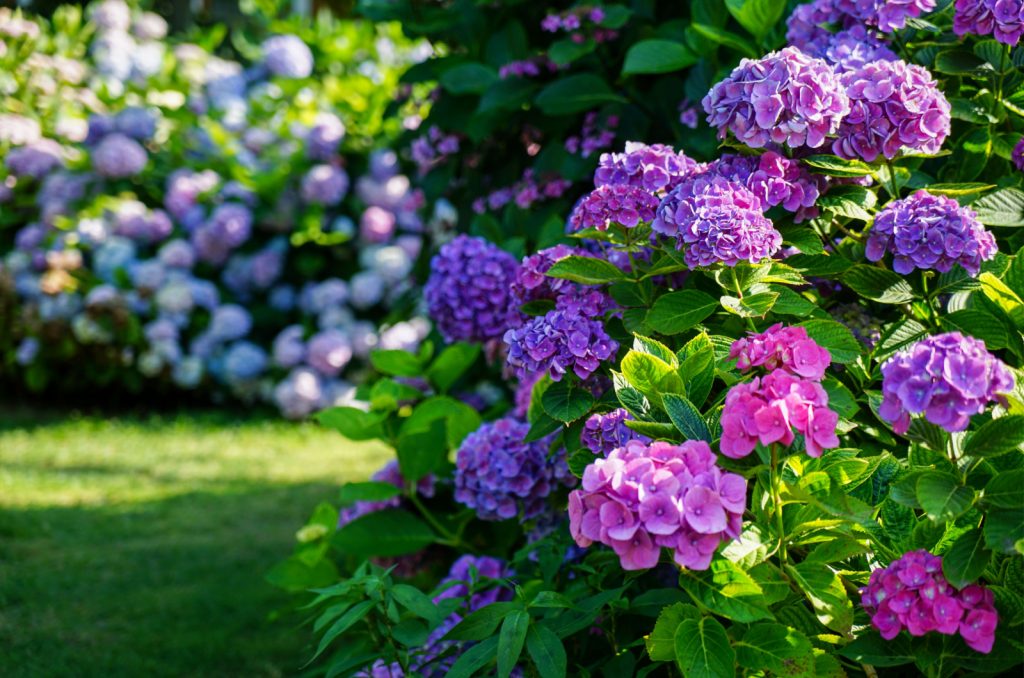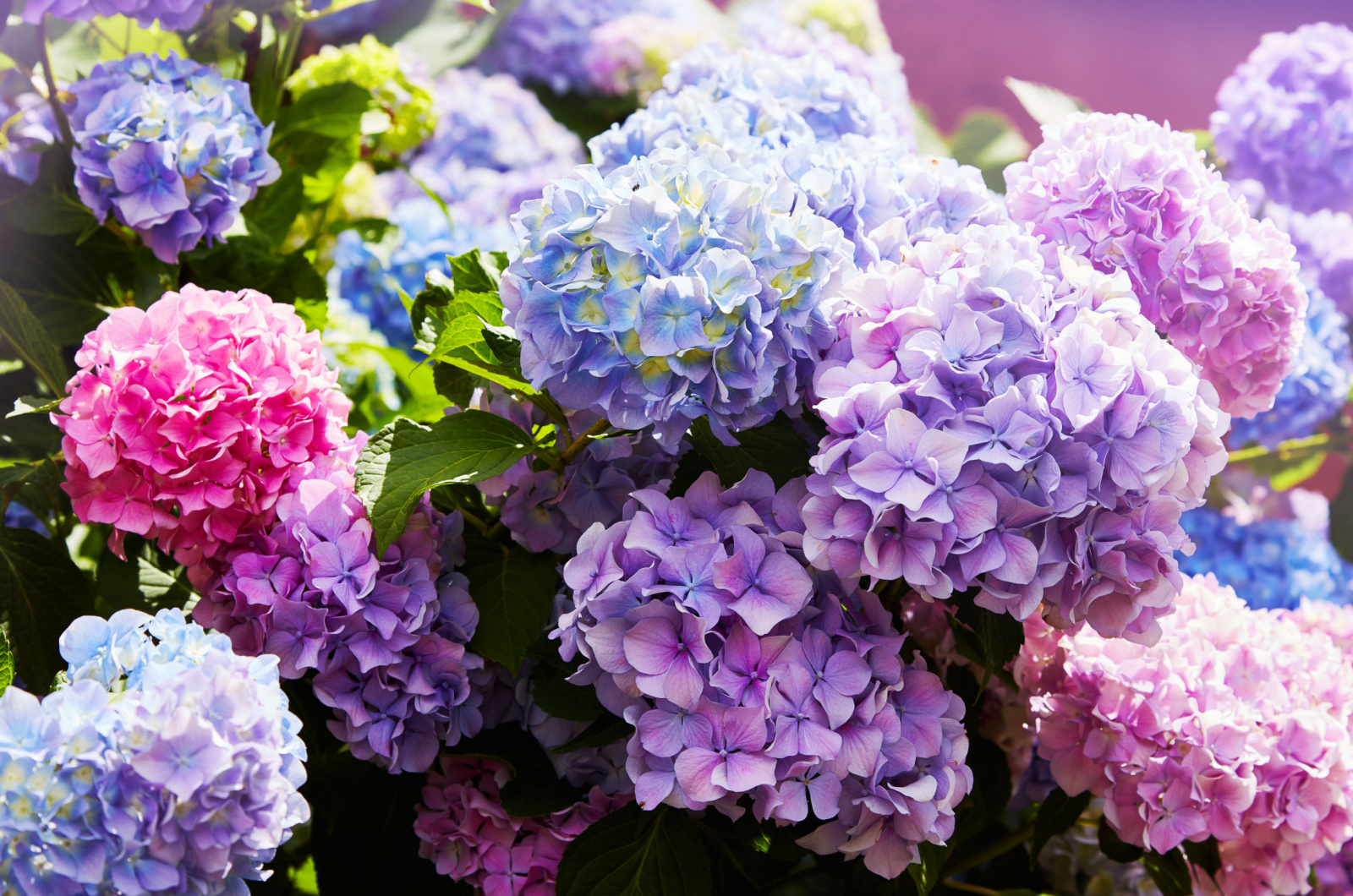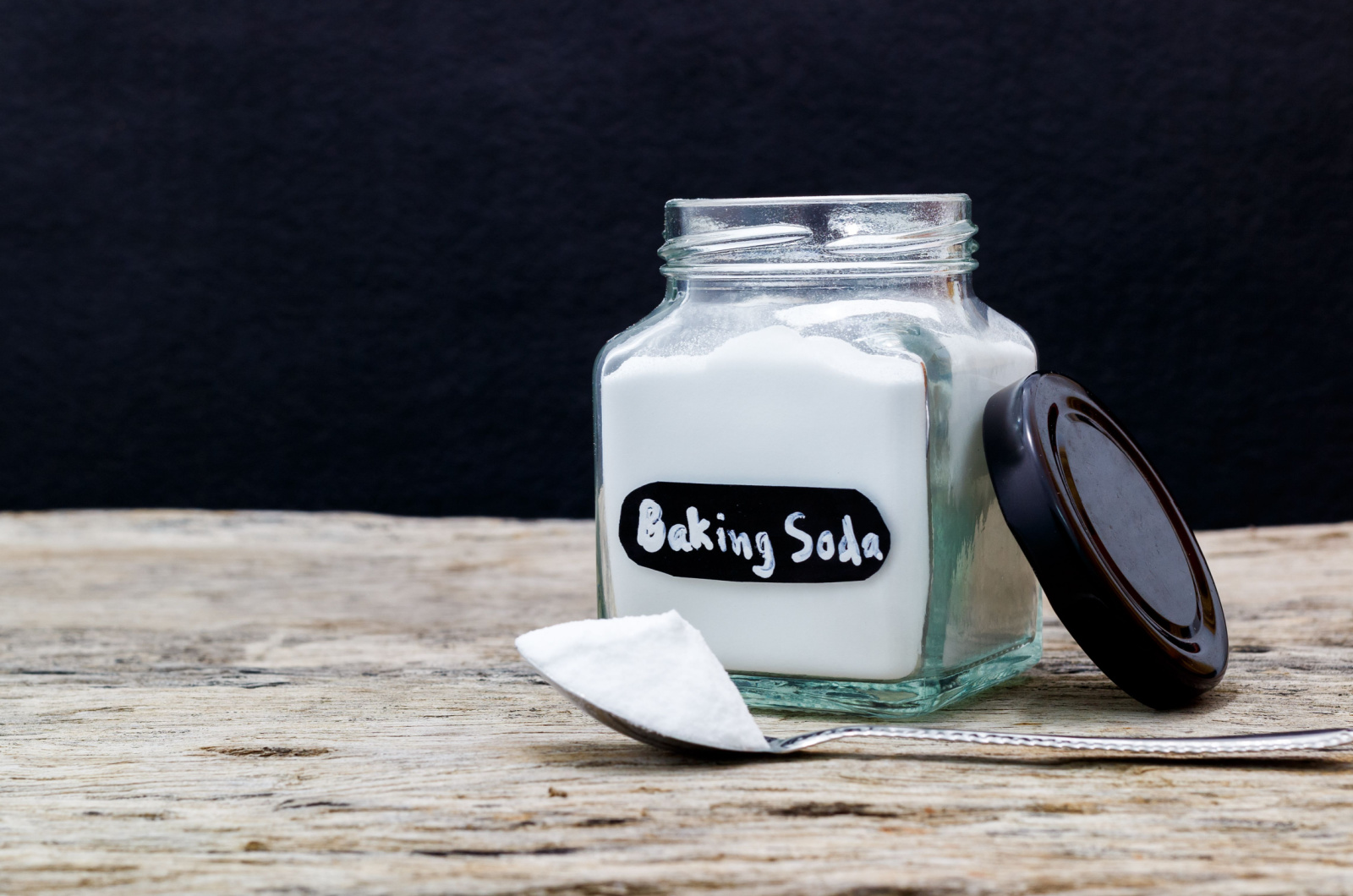I’ve often found myself wanting to speed up certain processes in my backyard, whether it’s helping my plants get over powdery mildew faster or making them produce more flowers.
I’ve tried just about everything, from commercial products to kitchen ingredients.
And one such product is baking soda. Everyone swears by it, especially when it comes to cleaning.
But what about gardening?
Can you use baking soda safely for your hydrangeas or is there more to the story. It is alkaline, so it should help change the color for these plants, but does it work that way?
Below, you can find the short and long answers of what this product can (and cannot) do for your hydrangeas, and discover whether it is really that beneficial.
Let’s get started!
The Short Answer
Baking soda is largely seen as bad for hydrangeas. Sure, it is an effective way to treat fungal diseases and kill weeds, but the drawbacks far outweigh the benefits.
It can damage the plant’s roots if you accidentally over apply it, which can have detrimental effects.
Also, there’s much talk about how this product is great at changing hydrangea flower colors, can be used as a fertilizer, and boost flowering, but there’s no scientific data to support this.
The Long Answer
There are numerous supposed benefits of using baking soda on hydrangeas, but not all of them are proven to work.
Let’s look at each of these claims and see whether they actually work or if there’s more to the story!
Can Baking Soda Change A Hydrangea’s Color?
You can alter hydrangea color with acidifying and alkaline agents, but can you use baking soda to do it?
Unfortunately, no, and here’s why!
It’s The Aluminum That Affects The Color
It’s a common belief that low pH makes hydrangeas blue and higher pH levels make them pink.
And that’s because the aluminum in the soil is more available to plants in lower pH values, and that’s the substance that affects the color of hydrangeas. (1)
Therefore, if you make the soil more alkaline, you restrict the amount of aluminum available to plants, making them pink or even red.
But can baking soda do this?
And It Isn’t That Easy To Change The Soil pH
Baking soda has a pH value of 9 and it can easily make liquids alkaline. But the situation in soil is a bit different.
Soils naturally resist pH changes. Substrates high in organic matter will change their pH value a lot harder than sandy soils, for instance. (2)
Therefore, you would have to add a lot of baking soda to change the soil pH for your hydrangeas, which isn’t that healthy.
Baking soda (also known as sodium bicarbonate) contains too much sodium, which can lead to salt injury, according to this Quora user.
Final Answer
Baking soda is not the right answer for altering soil pH because it will sooner hurt your hydrangeas than change their color.
If you want to change the flower color of this shrub, you can use these tried and tested amendments:
• Aluminum sulfate to lower the soil pH and acidify it
• Lime to increase the soil pH level and make it more alkaline.
Can Baking Soda Boost Flowering?
It’s not that uncommon to see gardeners using baking soda to make their hydrangeas produce more blossoms. However, this ingredient doesn’t yield promising results.
Hydrangeas require nitrogen, phosphorus, potassium, and other micronutrients to develop properly and produce numerous blossoms.
And sodium bicarbonate doesn’t contain any of these minerals. It can only introduce more sodium to your soil, which is one of the necessary micronutrients.
However, it is dangerous for plants if used in large quantities and can make the substrate salty and damage your hydrangeas. In fact, too much sodium will lead to the opposite effect and discourage flowering.
Baking soda contains oxygen, carbon, and hydrogen, but plants have other means of obtaining these elements. Therefore, you’re more likely to hurt your plants by adding this ingredient than help them flower.
Final Answer
If you want to boost your hydrangea blossoms, you can go with a bloom booster specifically made for these shrubs or use a slow-release, well-balanced fertilizer.
Make sure to give your plants enough water because they thrive in moist soils, and place them in a location where they can get some light shade during hot afternoons.
Can You Use Baking Soda As Plant Food For Hydrangeas?
It is important to fertilize your hydrangeas in order to keep them producing gorgeous flowers.
Some even suggest using baking soda for this purpose, but it cannot feed your plants the way compost or even synthetic fertilizers can.
Sodium bicarbonate (NaHCO₃) doesn’t contain any of the macronutrients your plants need, or rather there’s no nitrogen, phosphorus, or potassium in it.
It does contain sodium, a micronutrient plants require in small amounts. However, it is rare that soils lack this mineral so much that it negatively affects plant growth.
Additionally, using this ingredient regularly will oversaturate your plants in sodium, only leading to issues such as inability to uptake minerals and water from the soil.
Final Answer
Using affordable kitchen ingredients, such as baking soda, as fertilizers might sound tempting, but it isn’t suitable for your hydrangeas.
It won’t feed them adequately and will do them harm in the long run. It lacks all the essential nutrients and contains way too much sodium – an amount your plants simply don’t need.
If you want to improve the growth and flowering of your hydrangeas, stick to tried and tested methods, such as using compost or hydrangea-specific fertilizers.
Can Baking Soda Fight Hydrangea Fungal Infections?
Baking soda is clearly not useful for color changes, flower booster, or fertilizer, but you can use it as a weapon against fungal infections in some cases.
For instance, potassium bicarbonate – a substance closely related to baking soda – is a registered fungicide and was tested on bigleaf hydrangeas against fungal infections, such as powdery mildew and Cercospora leaf spot. (3)
However, the study discovered that the potassium bicarbonate didn’t completely prevent issues with fungal diseases, although it did limit them to some extent.
It worked when applied in larger quantities, but it affected other regions of growth. In fact, it damaged the leaves and led to low overall quality of the ‘Nikko Blue’ cultivar.
Consequently, you can use baking soda in moderation to prevent powdery mildew and similar fungal infections. It is alkaline and makes the surface unlivable to fungal spores, reducing their ability to reproduce and spread.
However, this product doesn’t work against existing fungal diseases. If your plant is already ill, you won’t be able to spray a baking soda solution to cure it.
P.S. Don’t forget that baking soda contains a lot of sodium, which can harm your plants if you apply it in excessive amounts.
Final Answer
Baking soda can reduce the possibility of your hydrangeas getting infected by fungal infections, but it can’t battle the fungi that have already attacked your plant.
If that’s the case, you’re better off removing the infected parts and spraying some fungicide to prevent a recurrence.
The best choice of action here is to avoid wetting your hydrangea’s flowers and foliage since moisture and low air circulation are the lead causes of fungal diseases.
Can Baking Soda Kill Weeds?
I know I’m not the only one looking for a way of dealing with weeds other than pulling them out one by one.
Baking soda is a great way to kill them off because it makes the soil unlivable for these plants due to the high sodium content. It dehydrates the plants, leading to a quick death.
Unfortunately, this kitchen ingredient is as harmful to your hydrangeas as it is to the weeds. If you spread this product in great quantities around these shrubs, you risk contaminating the soil with salt and damaging your plants.
The salts will cause build up in your plants, preventing them from absorbing nutrients and moisture. All of this can lead to root damage, leaf burn, or even kill your plant in serious cases.
Baking soda can also leach into the surrounding soil during watering or rain, contaminating an even larger area. The risk depends on how much powder you use, but I’d stick to using this ingredient for cleaning and cooking.
Final Answer
Baking soda is an effective weed killer, but it can also harm other plants in the area, so make sure to apply it only where the weeds grow to kill them off.
If you want to get rid of weeds surrounding your hydrangeas, I’d suggest pulling them by hand and mulching the area to prevent them from emerging in the first place.
Final Thoughts
If you have baking soda in your kitchen, it’s best to leave it there and not take it to your hydrangeas.
It can only make the soil salty and harm these shrubs in the long run. Sure, it will prevent powdery mildew, but there are far more effective ways to do it.
Trust me, you’ll save yourself a lot of trouble if you use tried and tested, scientifically proven methods to feed your plants and keep them healthy rather than trusting baking soda misconceptions.
Reference:
1. Schreiber, H. (2017). Curious Chemistry Guides Hydrangea Colors. American Scientist.
2. Coleman, N. T. & Mehlich, A. (1957). The Chemistry of Soil pH. Yearbook of Agriculture, pp. 72-79.
3. Hagan, A. K., Olive, J. W., Stephenson, J., & Rivas-Davila, M. E. (2005). Control of Powdery Mildew and Cercospora Leaf Spot on Bigleaf Hydrangea with Heritage and MilStop Fungicides. AUB, Alabama Agricultural Experiment Station.

